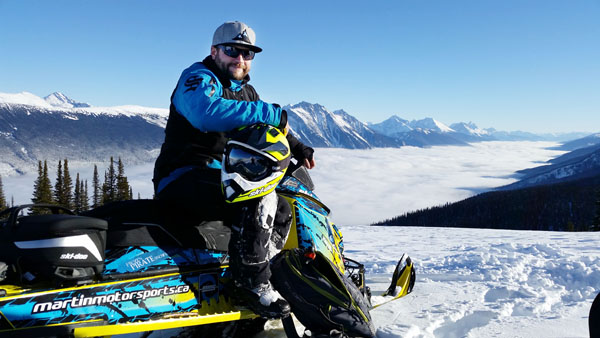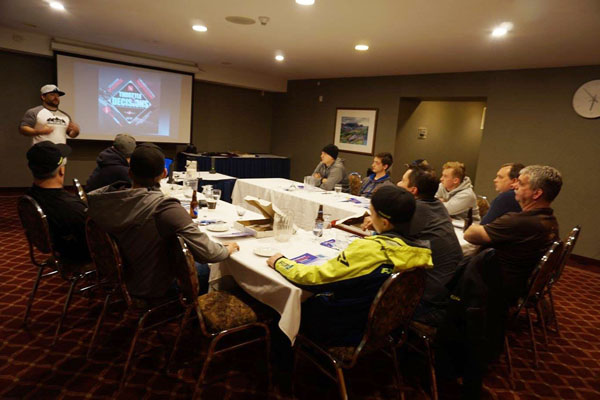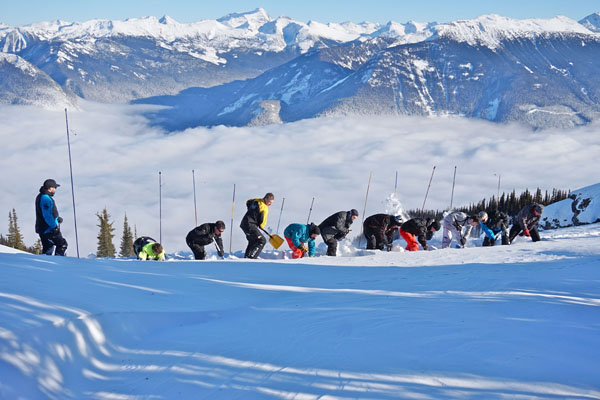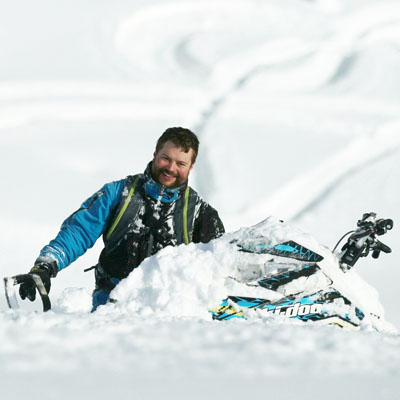by LAURA KEIL
Curtis Pawliuk’s science lab doesn’t have beakers or Bunsen burners.
When Pawliuk does science it’s on an alpine slope, 1500ft above the highway.
In the 18 years he has been snowmobiling, Pawliuk has learned many words for snow – rounds, facets, and types of crystals.
In the avalanche and snow science world, there is always more to know.
“We’re learning stuff every day about snow,” he says. “It’s unreal how it performs and behaves. It’s never the same.”
Pawliuk rides his Skidoo Summit hard. He rides in places others don’t. By necessity, he needed to learn as much as he could about snow to avoid the fate other snowmobilers had met blindly.

Ten years ago, mountain snowmobiling had really just begun and, with it, came new risks.
“Snowmobilers were in a bad place in the avalanche awareness world,” Pawliuk says.
In his job with the Valemount Area Recreation Development Association, and now with his business Frozen Pirate Snow Services, Pawliuk saw an opportunity to help.
In the mountains every chance he got, Pawliuk soon became an important source of snow conditions and safety warnings for Valemount riders.
A few years ago he began hosting avalanche workshops specifically geared towards sledders. As a professional member of the Canadian Avalanche Association, he is one of just a few certified avalanche instructors focussed on sledders.
The need is there.
“It’s been very successful – overwhelming, almost.”
On a Saturday evening, 6-10 sledder friends will gather in Pawliuk’s classroom for their second evening of learning. They’ve spent all day recreating on the hill, but now instead of pushing back Pilsners and prime rib, they’re staring at overheads.
It’s a wise choice for a sport known for high-marking, side-hilling and even normal riding that can provoke a deadly avalanche in the wrong conditions.

Pawliuk says his course provides a different kind of learning than you get in a large class held in the city. It’s more personal, hands-on and interactive. It’s also located in the midst of excellent riding.
“It allows them to come to Valemount, get the course, get their own day of snowmobiling on the Saturday, and then get their field day in on the Sunday.”
“They don’t think they’re wasting a day in the mountains.”
He says it’s not a joke that to become a professional member of the Canadian Avalanche Association you have to spend half your life training in the backcountry. But for the guy counting down the days in July until snowfall, it wasn’t too much of a stretch.
While Frozen Pirate also has a commercial tenure that includes guiding, they specialize in avalanche safety and Pawliuk says that’s what keeps them busy.
So what happens at an avalanche safety workshop? There’s information about transceivers, snow pack types, and dangerous weather.
But the best data is the kind Pawliuk is constantly collecting.
“Even the days we’re not in the field, we’re still assessing snow and trying to relate that to what’s going to happen two days from now when we do go into the mountains.”
“You don’t take a break from this. If you’re out that much, you are monitoring snow and weather from the first snowfall to the last.”
He says each weather event changes the snowpack, and it’s up to avalanche professionals to assess if that change is for better or worse.
He says after 12 years of working with snowmobilers, the dramatic story is the change he has seen in the level of avalanche awareness. But as a new sport, sledding is still evolving in technology.
“We’ve come a very long way very quickly. And we have a very long way to go.”
Lucky for him, it means more time in the snow.





